In this era, writing is everywhere, whether content writing, essay writing, or writing for a News company.
We live in a world of the internet, and most companies use content writing to promote their products. They get a good deal out of it.
This book is valuable because it shows us how to follow some rules to be a good content writer.
It covers storytelling, grammar uses, and how to make your writing content or blog helpful for others.
I try to summarize the main points so you can get the most out of this book summary.

- What Is Everybody Writing?
- 15 Ways To Improve Your Writing Abilities
- Some Words You Take Care While Writing
- Ask Yourself These Questions As a Starting Point For Crafting Your Story
- Tell The Story You Can Only Tell
- Word Count Guidelines For Different Content Formats
- Written Content:
- Social Media Posts:
- Web Page Titles and Descriptions:
What Is Everybody Writing?
Everybody writes, which means anyone can write.
“The difference between good at math and bad at math is hard work. It’s trying. It’s trying hard. It’s trying harder than you’ve ever tried before. That’s it.”
Matt Waite
The same is true about writing. Maths needs to be practised on a daily basis, the same as writing. To become a good writer, you need to write every day. It’s like a habit.
Myself was a banker and spent around 13 years working in the banking industry, working in financial, investment, and branch banking.
When I left my job for personal reasons, I started reading and writing content for my channel with the support of my team members.
It was a new journey for me. When I started, I had a fear of writing, but this book motivated me to write, and it became a helpful tool for me.
Writing is a way for me to connect with myself and others, organize my thoughts, exchange thoughts, and inspire me to transform.
Then I thought, why not write about this book summary so others can also benefit from its key points?
“Don’t write a lot. Just write often. Don’t worry about how much you’re writing—just that you’re writing.”
Ann Handley

15 Ways To Improve Your Writing Abilities
You must focus on some points while writing a blog or story to make it more creative and effective for users.
- First, consider how you can help our readers if they visit our site. Could you provide them with what they require?
- In short, a good blog or piece of writing should use simple language, practical messages, and good examples. The human brain understands better when we relate to others.
- Writing has always been a way of connecting, expressing, and inspiring, but crafting the perfect piece can feel overwhelming.
- Make it clear. Don’t make the reader work hard to understand you. Develop an in-depth understanding of the reader.
- To be a better writer, you must be more deliberate in your approach.
- Use relatable yet original metaphors. Avoid clichés, jargon, and buzzwords.
- The length of the short paragraphs (three to six sentences and just one is acceptable) and the short sentences (25 words in a sentence max) is acceptable.
- Longer words, sentences, and paragraphs force the brain to delay understanding ideas until the words come together to make sense. Make your writing clear and readable.
- Remove unnecessary background and jump into the topic right away.
- Find a writing friend and improve your writing together through mutual feedback.
- Finish your writing session on a positive note and return to it feeling motivated the next day.
- Every day, set a deadline for yourself to finish your work. There is always something to edit, but you have to accept the fact that you will have to finish at some point.
- If you want to elevate your writing? Hire an editor! There are three main types of editors: Copyeditors: They check your work for mistakes and make it cleaner. Substantive Editors: They help you improve your ideas by suggesting changes, like adding more detail or cutting out unnecessary parts. Line Editors: They focus on the small stuff, like grammar and word choice, to make your writing smoother and more polished.
- When you write something, you read it aloud and then make a correction.
- When readers read your content, they get the right answer in a simple and effective way.
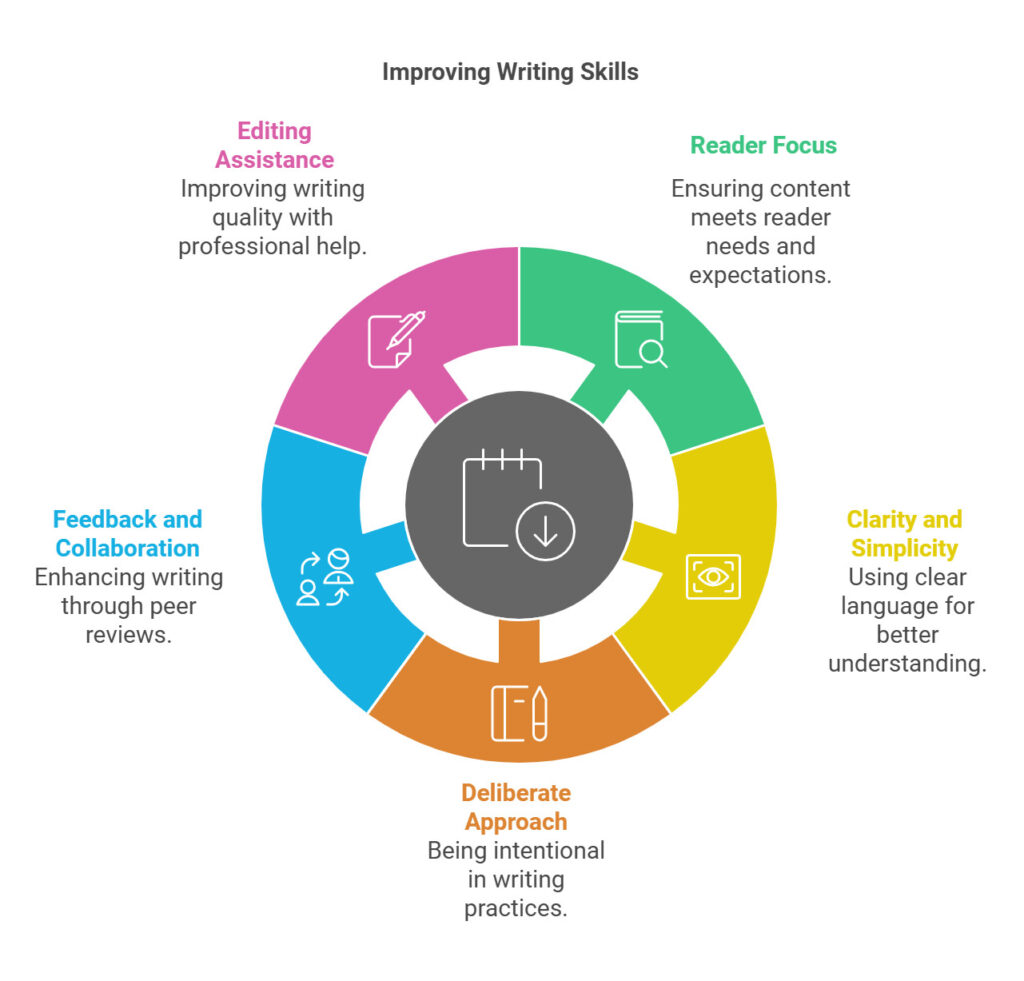
Any fool can make something complicated. It takes a genius to make it simple.
Woody Guthrie
Some Words You Take Care While Writing
Here are the top 17 anti-wordiness, anti-fuzzy thinking, pro-brevity, and pro-clarity alternatives.
- Ways by which = Ways
- Continues to be = Remains
- In order to = To (especially at the beginning of a sentence)
- There (are) will be times when = Sometimes, At times
- Despite the fact that = Although, Though
- At which time = When
- In spite of = Despite
- When it comes to = In, When
- The majority of = Most
- A number of = Some, Few, Several, Various (or eliminate entirely)
- When asked = Asked
- Leverage (as verb) = Use (or Put to Use), Harness, Apply,
- The same level of = As much
- While (if not being used to mean during or at the same time as) = Although or Though, Whereas
- Moving forward = Later, In the future, From now on, Hereafter
- Centered around = Centered on
- Try and [verb] = Try to [verb]
Use should have, not should of.
Keep your verb tense consistent throughout; don’t switch around between present, future, or past tenses.
Avoid sentence fragments. It’s okay to use small parts of sentences to emphasize important points. At least, sometimes. (Like that.) (And that, too.) (And this.)
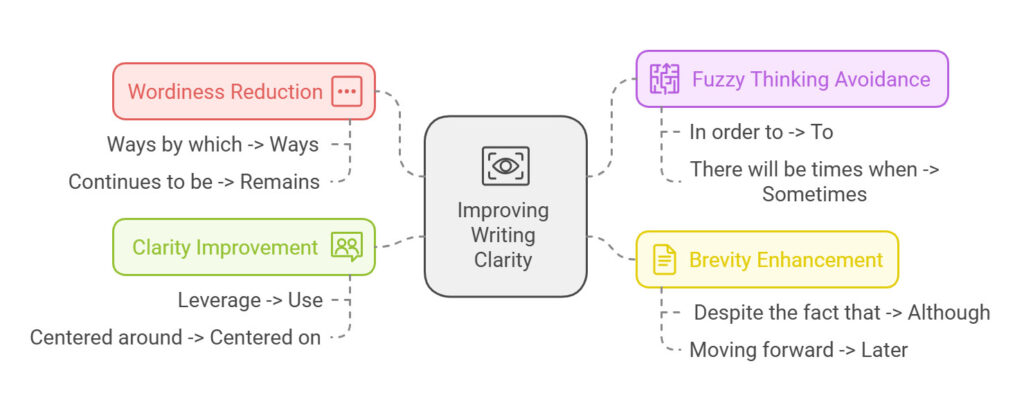
Writers should not use these words in their blogs.
- Don’t forget…
- Never…
- Avoid…
- Don’t…
- Remember to…
Writing your blog, pay attention to how you can help others, improve people’s lives, ease their troubles, take care of their worries, and take care of their wants.
Most people think that writing is about grammar, but it is more about thinking, rewriting, and relentlessly focusing on the reader than it is about knowing your effect from your elbow.
This doesn’t mean grammar and usage aren’t necessary. They are, but in many ways, they’re secondary.
You may want to use the active voice, or active writing, instead of the passive voice.
Passive: The video was edited by a guy named Hibachi.
Active: A guy named Hibachi edited the video.
Whatever you write on the blog, please relate it to it and explain how it can help our users. Think from others’ perspectives and also write your own.
Your story should offer a new, fresh perspective. What’s interesting about your company? Why is it important? Is it uniquely you?
Your story might be about you, but it should always be told in your customer’s life context.
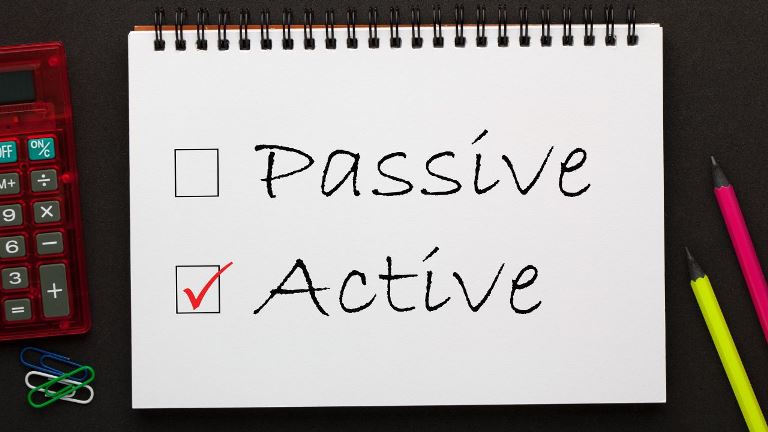
Ask Yourself These Questions As a Starting Point For Crafting Your Story
- What sets our business apart?
- What’s the compelling origin story of our business and its founder?
- What challenges does our company address? What sparked the idea for our business?
- What were the pivotal moments that shaped our company?
- How has our business grown and transformed over time?
- What is our passion and purpose, and how do we connect with our customers?
- Can we tell our story in a surprising way, perhaps using a metaphor or analogy?
- What do we take for granted that others might find fascinating?
- What is our ultimate goal, and how will we make a positive impact on the world?
- The last point is especially relevant, as it’s the foundation for your entire tale. How are you going to change the world…even a little bit? How can you make it better for us all?
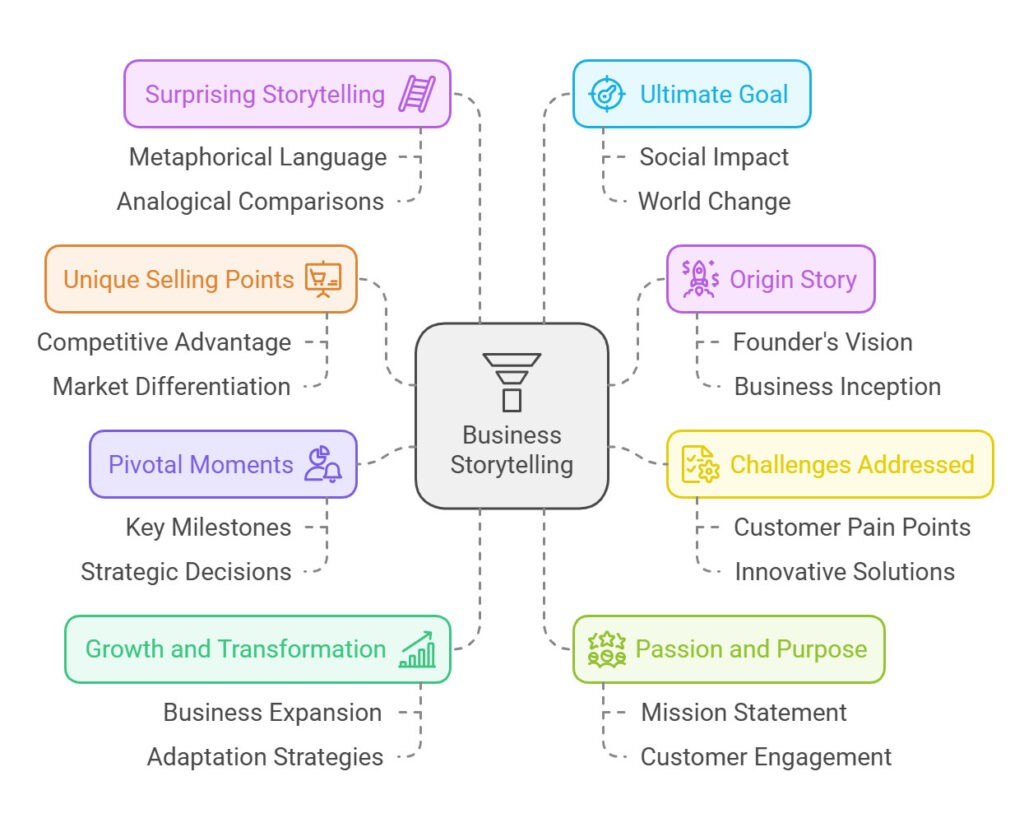
Tell The Story You Can Only Tell
It’s like going to any corporate company for an interview.
Sometimes, a Senior person can ask you why the company hired you for this job, which means what unique qualities you have over other candidates.
The same applies. Why do readers choose your blog to read what unique you provide them?
You have to prove that you are providing accurate information about the product. You are responsible for building customer trust.
Tell your readers how you'll Change the World.
Writing is a very effective method, as famous quotes have a significant impact.
Organizations, schools, people, and academic institutes write and paste the quotes on a board.
So, people become motivated to achieve their goals, which helps them succeed in their respective fields.
Ann Handley gives the example of a big brand named Skype, the video and chat technology company acquired by Microsoft in 2011.
The story, as told in a video called ‘Born Friends,’ is about two girls who were born without a full arm.
The girls reside in a world apart, yet they establish a connection through Skype and eventually meet in person.
Simply put, Skype’s success is not about the quality of its calls or its global use.
It does not discuss VoIP (voice over Internet protocol) as an alternative to mono-voice telephone communication and does not mention data packets.
Instead, it’s more subtly, but more powerfully, about how those things help humans connect with other humans.
It’s about helping human hearts connect with other human hearts.
“Unless you have so-called commodity content—you have to have a unique voice,”
Andrew Davis
“That’s part of your hook. That’s what makes you different and how you build relationships with people.”
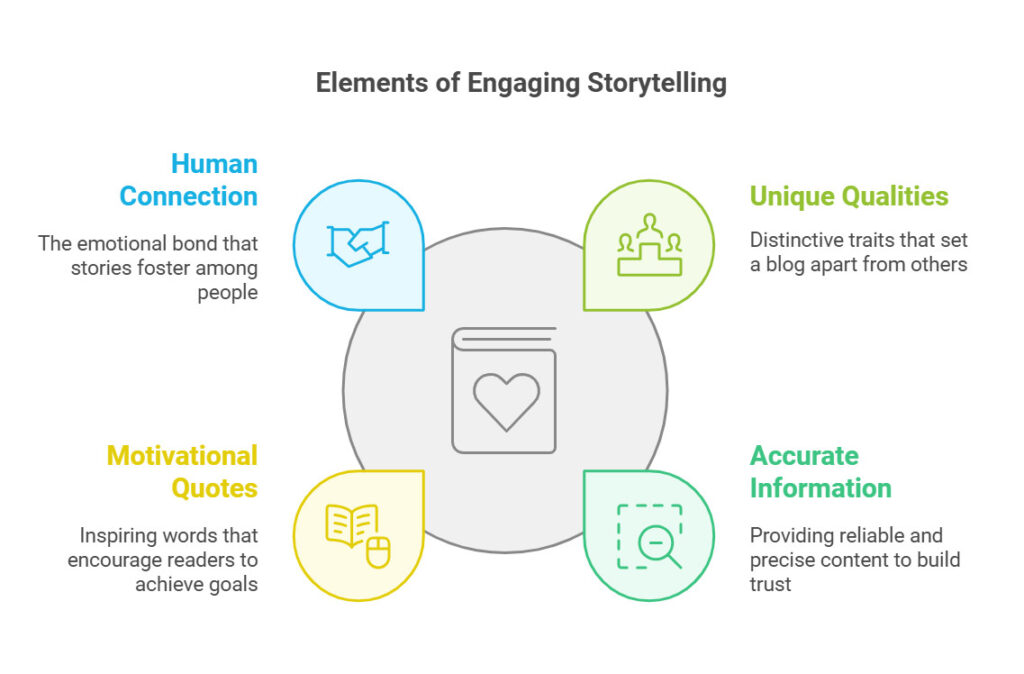
Word Count Guidelines For Different Content Formats
Written Content:
- Blog Post: 1500–2000 words (aim for in-depth coverage)
- Email Subject Line: 50 characters or less (keep it concise and intriguing)
Social Media Posts:
- Facebook: 100–144 characters for engaging posts with clear calls to action.
- Twitter: 120–130 characters for concise, impactful tweets with relevant hashtags.
Web Page Titles and Descriptions:
- Titles: 55 characters or less for optimized search engine visibility.
- Descriptions: 155 characters or less for clear and concise summaries.
- YouTube Videos: 3-4 minutes for engaging and concise videos.
- Podcast Episodes: 22 minutes or less for focused and digestible content.
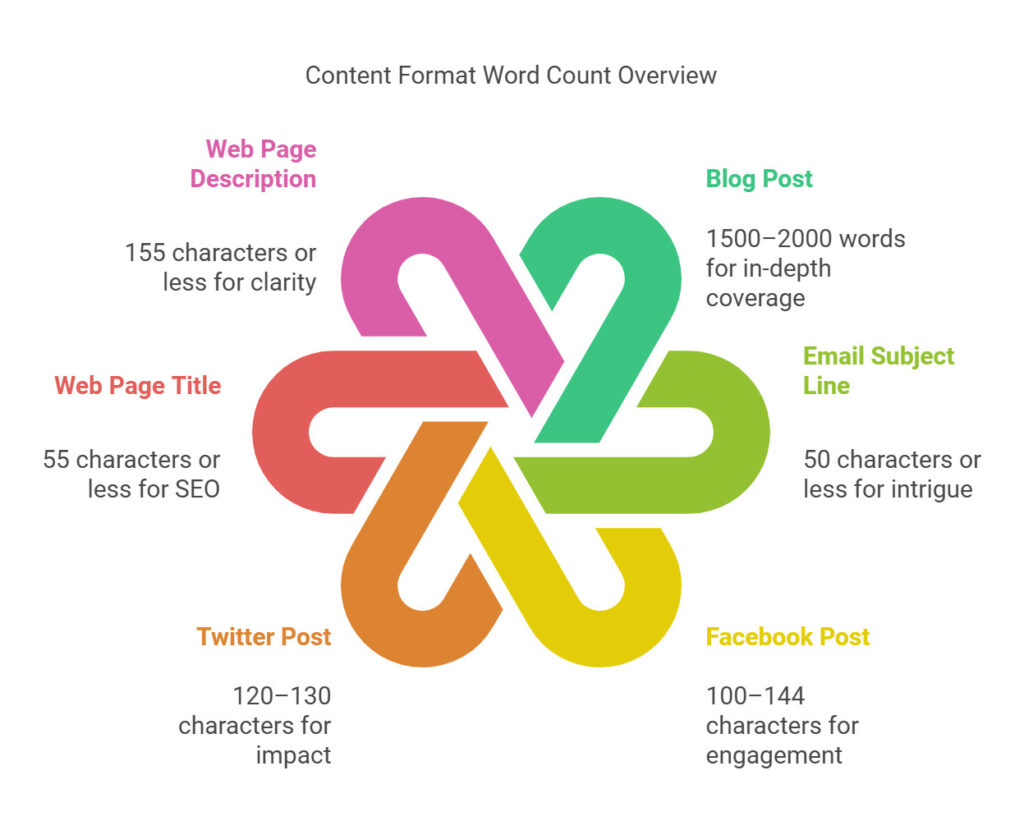
Want to know the exact word count of your blog post? Use our FREE Word Count Tool! It’s super easy and helps you keep track of your writing progress.
